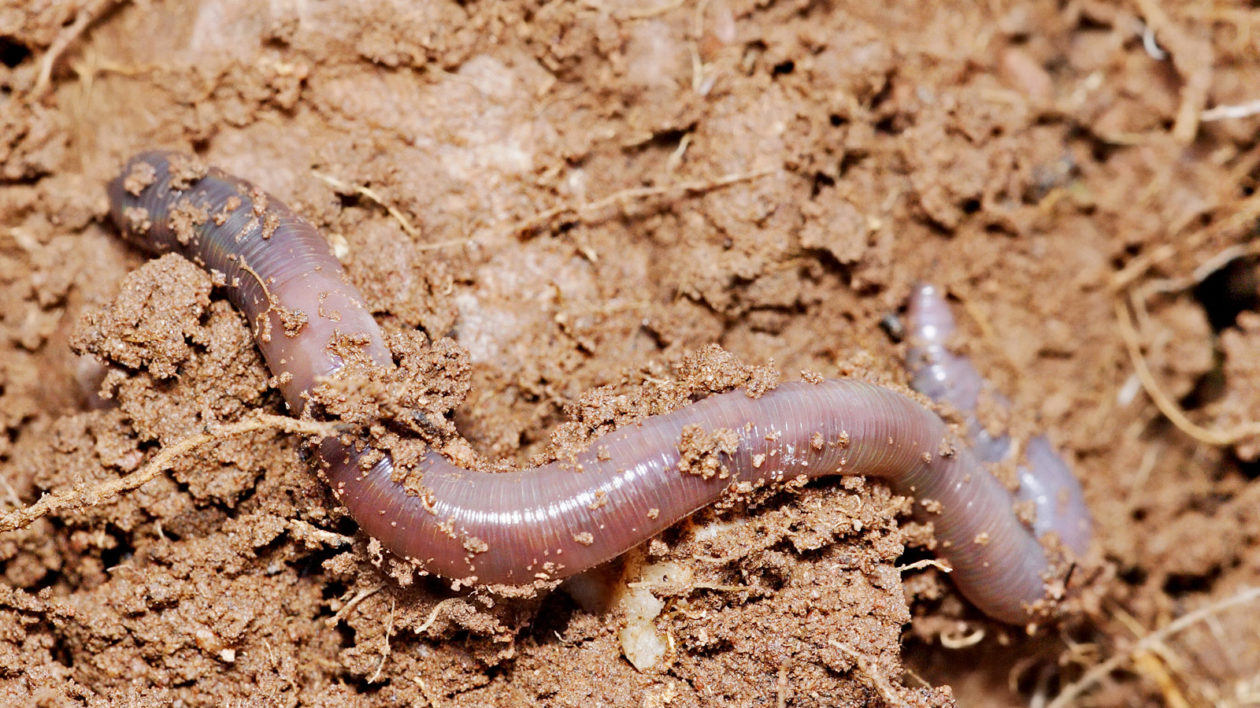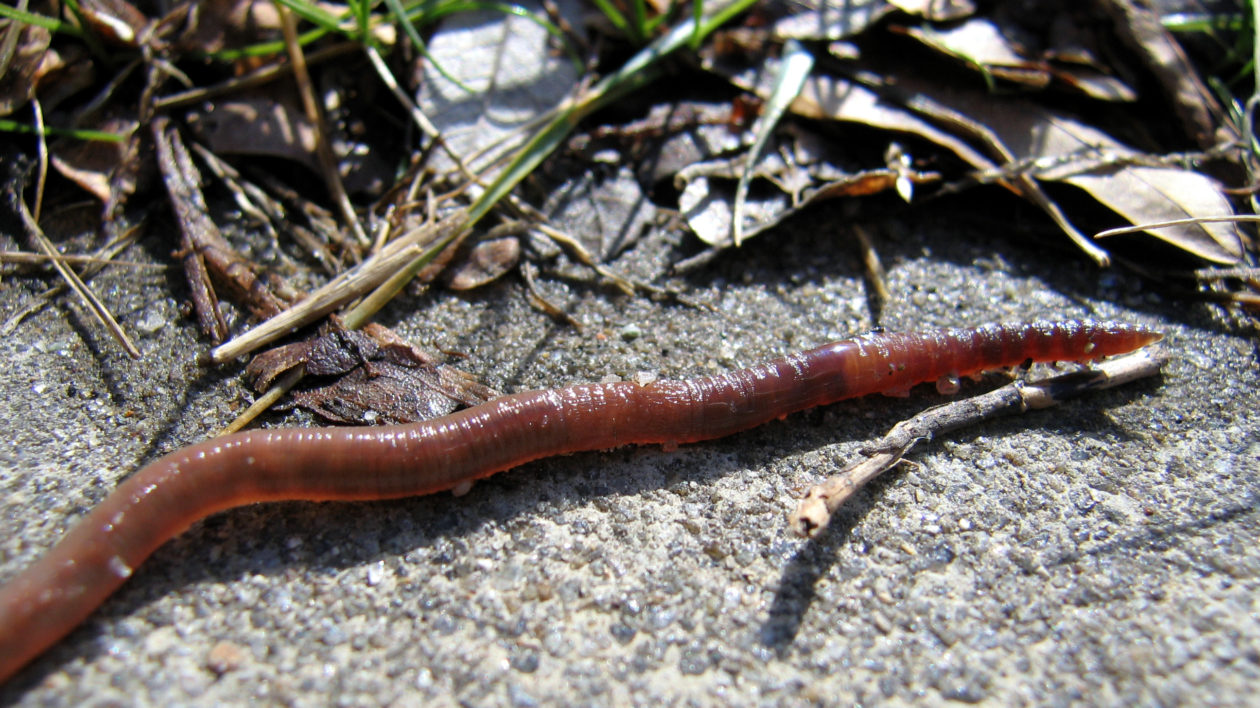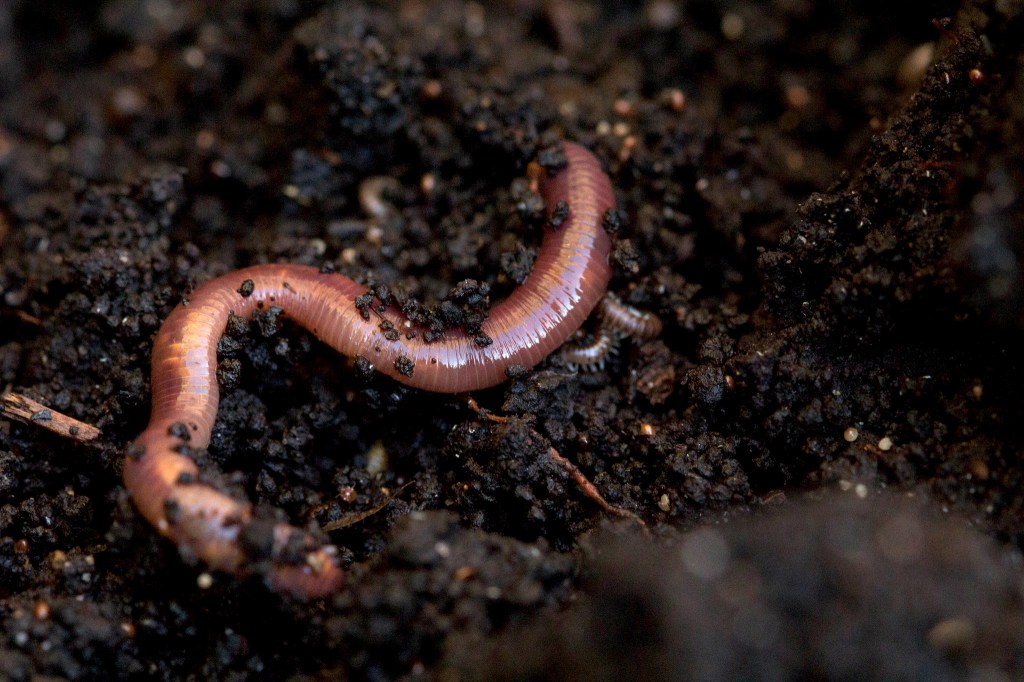I spent much of my walk across town this morning dodging earthworms. It has rained much of the past 24 hours, and the worms were everywhere. On the sidewalk, in puddles, on the street.
Many of us have seen so many earthworms emerging after rainstorms that we don’t pay much attention. Even the most curious urban naturalist probably doesn’t think about it much, because we already assume we know what’s going on. It is probably one of the first “nature lessons” we learned at school: earthworms have to come to the surface after rain because they’re drowning.
As is the case with so many nature stories, the real reason is likely more complicated than we imagine. Let’s dig deep, if you’ll pardon the pun, and look at what’s really happening when we see earthworms on a soggy sidewalk.
The Truth About Drowning Worms
Conventional wisdom holds that earthworms head to the surface after rain because they can’t breathe. This is still taught to schoolkids, and you can find a lot of detailed explanation online. Most claim that worm trails and air pockets underground become submerged, and the earthworms can’t breathe. It makes sense.
Most researchers, though, dispute this explanation. As Chris Lowe, a researcher at the University of Central Lancashire, points out in Scientific American, earthworms breathe through their skin and require moisture to do so.
Become a Member
Make a lasting impact for nature when you join The Nature Conservancy
Humans drown when their lungs fill with water. This is not possible for earthworms as they lack lungs. Multiple studies have also shown that most earthworm species can survive being submerged in water for two weeks or more.
Lately, most popular scientific accounts write off the “drowning worm” idea as a myth. While it is certainly not likely the entire explanation, perhaps we shouldn’t entirely rule it out. Research published in the journal Invertebrate Biology, for instance, found that worm behavior following rain depended on the species.
Two earthworm species with different life histories were investigated by the Taiwanese researchers. One species consumed more oxygen at night than during the day, and the other consumed lower amounts of oxygen equally during a 24-hour period.
The species that consumed more oxygen at night tolerated water immersion poorly. At night, when it needed oxygen the most, it was especially intolerant of rainfall and came to the surface.
The other species never came to the surface, even during the rain. Its consistent, lower intake of oxygen enabled it to better stand water immersion.
So it may well be that the earthworms you see on sidewalks and streets are those that need more oxygen. But many researchers doubt this is the entire explanation.

Raindrops Sound Like…Moles?
Another common explanation for worm emergence is that rain sounds like predators, so the worms come to the surface to escape. Moles, common earthworm predators, make vibrations in the soil as they hunt.
A tradition in the Appalachians and elsewhere, called worm grunting or fiddling, involves using a saw or stick to make vibrations on the soil’s surface. This brings worms to the top that are then harvested for bait. Essentially, humans are mimicking the sounds of hunting moles. (I admit I have tried this without much luck).
The predation-escape theory suggests that the patter of raindrops is also similar to the sound of moles. University of Wisconsin professor Thea Whitman notes that this theory has never been demonstrated in laboratory tests. It always seemed like an unconvincing explanation to me. After all, worms emerge after a prolonged, misty rain that doesn’t strike the ground with as much force.

It’s Not All The Worms
If worms were dying due to moisture, or fleeing predators, you might expect to see a broad cross-section of a given worm population. But that’s not the case. After a rainstorm, not all of the worms of a given species come to the surface.
As Phil Nixon of the University of Illinois explained to Mental Floss:
“If the other factors were the driving influences, large numbers of juvenile worms should also be present, but the vast majority appears to be adult red worms with occasional adult nightcrawlers. When worms are brought to the surface with electricity, worm-grunting, or chemicals, many more worms are present. It is obvious that only a small percentage of the adult red worms are emerging during heavy rains.”
Think about this. You are not seeing young earthworms in your damp backyard. If they were faced with certain death, they’d be there with all the adults.
Something else is going on.

Moving on Up
Many earthworm and soil experts have settled on a version of this explanation: Moving around the soil is relatively slow and difficult, even for earthworms. They can cover a lot more ground on the surface. The problem is, earthworms need to stay moist. Most of the time, they would dehydrate if they were above ground.
But when it rains, the surface is moist enough for worms to survive and remain hydrated. For a few species, they can more easily move about and find mates. For other earthworms, it may well just be a way to disperse and move into new territory. They can migrate much longer distances than they ever could underground.
Of course, coming to the surface poses hazards. The earthworms are easy pickings for birds and other predators. In our urban and suburban world, they also get trapped on sidewalks, patios and roads. The worms I encountered this morning gave the impression that their migration strategy was a failed one. But most worms survive. They move across the lawn or park and burrow back into the soil without any problems.
There undoubtedly will be new research and new revelations about the lives and habits of earthworms. Nature’s mysteries are not just “out there” in the wilderness. The common creatures that live around us still hold surprises. Take a moment and observe the phenomenon happening in the natural world, right now, where we live. The surprises and wonders are right under our feet.




How do earthworms end up in gutters?
Very interesting article- I’ve saved many a worm from getting stepped on!
one possible reason could be that the foraging is easier on the surface after a rainfall. one rainy evening, i noticed several big earthworms partially extending their bodies above the surface of the ground – just below a gutter downspout. as I watched them, they grabbed bunches of what looked like bits of dried (and now wet) grass clippings with their mouths and retreated underground with the organic matter sticking out of both sides of their mouths. I recorded a video if anyone is interested. mlucera2000@yahoo.com
I’ve always wondered about this myself? Earthworms certainly won’t Drown and, for Anyone Who’s ever Tilled any soil or Dug a Hole anywhere you know that there are a Lot of Earthworms that Don’t come to the Surface when it Rains.
Whenever Somebody actually Figures Out the answer, I’ll love to See it and How You came up with “That” reason as the answer?
My Guess, We sure aren’t Earthworms and We’ll never know!
This was fascinating ! Thanks for the ideas. I’ve always wondered why we see worms when it rains (and I’m 77, so I’ve wondered for a long time.)
I gather them and put them in my garden. If I little time I just pick them off the street and toss them in the grass or someone else’s garden along my path.
I’m a frustrated worm wrangler. During a wet winter several years ago I collected many dozens of surfaced worms from our driveway (relocated to the garden beds). This past winter (in the Santa Cruz mts of N Cal) although very wet with weeks of heavy rain no such opportunity. The worms seem to be happy where they lay.
Possibly repaving of road and a recoated drive two years ago makes for a worm repellent?
Here’s a thought. Snakes will move to different areas because of temperature to regulate body heat. I would assume that the deeper the soil the more moist it is, especially if it has not rained in awhile. Maybe it is just a navigational mistake as the surface soil gets more moist?
I love this article! It starts with what seems like a logical explanation and proceeds through many scientific investigations, with more to come, no doubt. I’ve always loved earthworms and will never look at them the same again.
We live in a 55+ community with a HOA. We see lots of DEAD worms on the surfaces the day after our lawn-care company applies pesticided, about three times a year.
I just realized that I saw so many worms on the sidewalk after a rain when I was growing up In Bflo, NY in the 50’s and 60’s. Now in the suburbs of Atlanta, I see so few. Why? I know they are in the garden…maybe not so many though.
I was surprised to read about the ‘drowning’ of earthworms. I have a small, artificial pond which I completely drain and clean two or three times a year due to all the debris collecting in it from overhanging tree limbs. Each time, I as I get to the last remaining layer of water in the lowest part of the pond, I find worms alive and well there. I always pick them up with a twig and put them down on the moist area surrounding the pond, and I suppose they immediately crawl into the ground. The point here is that if the worms are not able to live for long periods underwater, why do I always find live earthworms there whenever I drain my pond? Where do they come from anyway? The pond has a rubber liner on the bottom. Do they come out of the ground surrounding the pond, then fall into the pond? That seems the only logical explanation. Then again, they are all alive and thriving in this water, because they certainly cannot climb back out, and I don’t find any dead ones. A small mystery here 🙂
The pavement outside my patio usually has a few dried up worm that we sweep off almost daily. I was wondering if it rains or some moisture hits the ground of the dried “corpses”, does that revive them?
Your image of the bird with a worm is incorrectly identified as a “robin.” It is neither the American Robin or the European Robin. It is a Fieldfare, a thrush in the same genus, Turdus, as the American Robin (and no relation to the European Robin), but not found in North America, but throughout the UK and Europe and northern Asia.
Hi Mike,
Thanks for your comment. The caption is corrected now.
65 years ago, when I was very young, I learned how earthworms can regenerate broken off parts, if they are safe from predation while healing. I had just gotten my first bike, and I was horrified by the worm carnage on the sidewalk when we all went out to ride after a rain. So I decided to collect the damaged ones and keep them safe in a worm hospital: a cigar box lined with tissue paper so I could keep them warm and dry. No one told me worms need to be moist and cool, and I was devastated when my patients shriveled up and died. I so wanted to help them. I still feel regret for the ones who died from my ministrations. I didn’t understand until someone explained it to me. I wish for all young animal lovers the kind of guidance I didn’t get until too late. Science and compassion need to be linked, and youngsters need encouragement to observe nature as closely as they can.